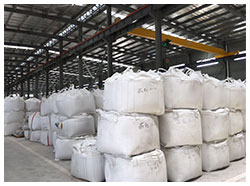Mahavir is a potassium feldspar imported by Laguna Clay and marketed as a substitute for the no longer available G200 feldspar which was mined in Monticello, GA.
Mahavir Feldspar is mined in Beawar, Rajasthan, India by the Mahavir Minerals company:
Mahavir’s mines are spread across 500 hectares of land, and contain high quality quartz, feldspar, clay, granite and limestone deposits.” https://mahavirminerals.com/resources.html
The feldspar in mined using an “opencast” method in which “top soil and overburden is removed. The exposed pegmatite is either broken by hand or by drilling and blasting. The broken materials are sorted out and sized, then brought to the processing facility.” https://ibm.gov.in/writereaddata/files/07302015125329IMYB2013_Felspar.pdf

The processing facility includes crushers, hammer mills, and ball mills which processes material to about 6mm. The material is washed to remove clay. The processing of felspar involves flotation and magnetic separation to remove accessory minerals like mica, garnet, ilmenite and quartz. The material is further refined to various mesh sizes through rollers down to 400 mesh. Crushed feldspar is separated mechanically by screens to meet various mesh sizes. It is bagged in large totes and 50# bags.

Geologic Origins
Feldspar can form in a variety of thermal environments, during the crystallization of liquid rock (magma) as both intrusive and extrusive igneous rock and by metamorphism of rocks deep in the earth. Mahavir felspar is found in large granite bodies (called plutons), from pegmatites (formed when the last fluid stages of a crystallizing granite becomes concentrated in small liquid and vapor-rich pockets that allow the growth of extremely large crystals).
The earliest phase of tectonic evolution was marked by the cooling and solidification of the upper crust of the earth surface in the Archaean era, approximately 2.5 billion years old. The Archaean rocks were formed during the very early period when there was no life on the earth. They are mostly igneous origin. They are also comprising metamorphosed granitic and basaltic rocks together with some amount of sedimentary rocks.
Some of the oldest Archaean rock consists of granitic rocks, gneisses, schist, greenstones, amphibolites and quartzite’s. These rocks form the basements of all other formations, they are referred to as the Archaean Basement Complex of India.
The Archaean formations in the Indian Shield occupy most of the southern and eastern India and on pocket in Rajasthan, where the feldspar is mined. These contain the following metamorphic rock formations:
The oldest to youngest are
a) Unclassified crystalline rocks
b) Charnockites
c) Khondalites and
d) Dharwar System of rocks
After this geological episode, there was a period of volcanic eruption and igneous intrusions containing granitic masses, charnockites, dykes and other rocks. There are also some unclassified crystalline rocks belong to this period.

